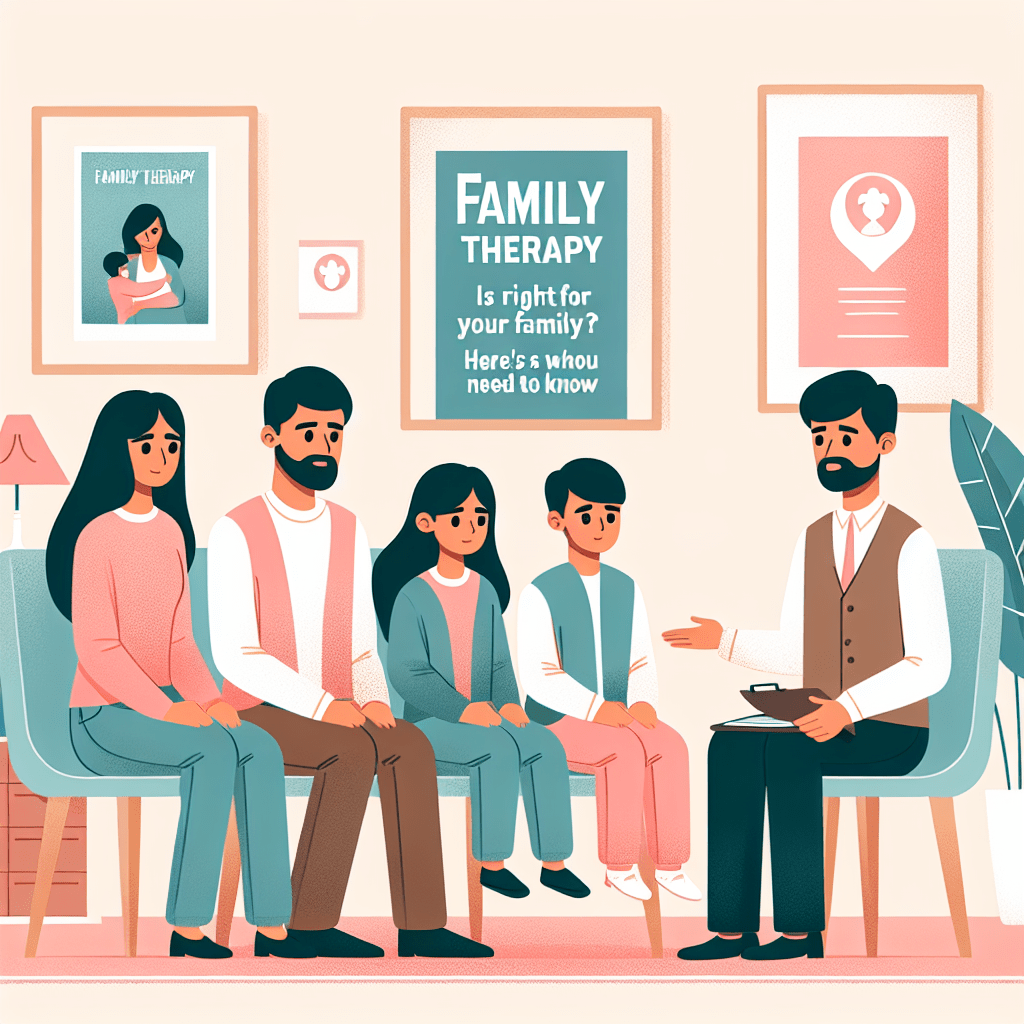Get your free Book Here

Families can be complex units filled with diverse personalities, backgrounds, and life experiences. When issues arise, it can feel overwhelming. Family therapy offers a structured environment to address conflicts, improve communication, and rebuild relationships. This article explores various aspects of family therapy to help you determine if it’s the right fit for your crew.
Overview of Family Therapy
Family therapy is a form of psychological counseling that focuses on the relationships and dynamics within a family. Unlike individual therapy, which centers on personal issues, family therapy addresses the collective challenges that arise among family members. The aim is to foster stronger connections, better communication, and a deeper understanding of one another’s perspectives.
Why Choose Family Therapy?
Navigating family challenges often feels daunting. Here are compelling reasons to consider family therapy:
- Improving Communication: Families that lack open communication may experience misunderstandings. Therapy can help express feelings effectively.
- Resolving Conflicts: Ongoing disputes can damage relationships. A therapist provides tools and strategies to resolve these issues.
- Fostering Understanding: Therapy encourages empathy by helping each family member understand the others’ viewpoints.
- Strengthening Bonds: It creates an opportunity to strengthen ties and build a supportive family environment.
- Addressing Trauma: History of trauma within a family can leave lasting scars. Therapy aids in processing these experiences collectively.
Who Can Benefit from Family Therapy?
Family therapy is suitable for various family structures, including:
- Nuclear Families: Parents and children seeking stronger connections.
- Blended Families: Stepparents and stepsiblings navigating their new relationships.
- Extended Families: Including grandparents, aunts, uncles, and cousins facing issues together.
- Families with Special Needs: Managing unique challenges that come with parenting children with disabilities.
- Families Struggling with Addiction: Addressing ways addiction has impacted family dynamics.
What Happens in Family Therapy?
Family therapy involves structured sessions guided by a trained therapist. These sessions include:
- Initial Assessment: Gaining insights into the family’s dynamics, history, and individual struggles.
- Setting Goals: Establishing clear objectives for therapy sessions tailored to your family’s needs.
- Open Dialogue: Facilitating discussions where each member can express their thoughts and feelings.
- Problem-Solving Strategies: Introducing methods for addressing ongoing issues and improving interactions.
- Follow-Up: Regularly checking progress and adjusting strategies as necessary.
Where to Find Family Therapy Services?
Finding the right family therapy services can be straightforward. Consider these options:
- Local Counseling Centers: Many offer family therapy as part of their mental health services.
- Private Practitioners: Licensed therapists often provide specialized family therapy sessions.
- Online Platforms: Teletherapy options are available, offering flexibility and convenience.
- Support Groups: Some organizations host family therapy groups focusing on specific themes like addiction or grief.
- School Counselors: Schools often have counselors trained to assist families with challenges related to education or behavior.
When to Seek Family Therapy?
Recognizing the right time to seek family therapy can be challenging. Consider therapy when:
- Communication Breakdowns: Family members struggle to express themselves or misunderstand one another consistently.
- Crisis Situations: In cases of severe distress such as loss or addiction, immediate support helps navigate the turmoil.
- Recurring Conflicts: Issues resurging despite attempts to resolve them indicate deeper underlying problems.
- Life Transitions: Changes such as divorce, relocation, or a new job can disrupt family dynamics.
- Mental Health Struggles: Any family member facing emotional or behavioral challenges may benefit from collaborative support.
How to Engage in Family Therapy?
Getting started with family therapy is an achievable process. Follow these steps:
- Research: Look for qualified therapists with experience in family dynamics.
- Discuss as a Family: Initiate a conversation among family members to ensure everyone is on board.
- Set Expectations: Clarify what everyone hopes to achieve from therapy sessions.
- Schedule Appointments: Find a time that accommodates the entire family for sessions.
- Stay Committed: Consistency is vital in therapy for achieving long-term success.
Pros and Cons of Family Therapy
Taking the plunge into family therapy comes with its benefits and drawbacks:
Pros:
- Enhanced Communication: Families learn to express feelings constructively.
- Conflict Resolution Tools: Practical skills help navigate disputes effectively.
- Strengthened Relationships: Many families find renewed closeness and support post-therapy.
Cons:
- Emotional Workload: Addressing family issues can evoke intense emotions.
- Time Commitment: Regular sessions require scheduling and persistence from the family.
- Not Always Effective: While many families benefit, therapy is not a guaranteed fix for all challenges.
Similar Approaches to Family Therapy
Consider these alternative methods for family support:
- Mediation: A neutral third party helps facilitate discussions and agreements.
- Support Groups: Connecting with other families facing similar challenges can offer valuable insights.
- Individual Therapy: One-on-one sessions can also contribute positively to an individual’s family interactions.
- Family Workshops: Educational programs focused on communication skills or specific issues families face.
FAQs
1. How long does family therapy typically last?
Sessions usually last from 50 minutes to an hour, with the number of sessions depending on the family’s needs.
2. Is family therapy confidential?
Yes, confidentiality is crucial, though there can be exceptions in cases of danger to oneself or others.
3. Can I attend therapy without my family members?
While individual sessions can be beneficial, family therapy works best when all members participate.
4. What should we bring to therapy?
Arrive ready to share openly. Consider jotting down any specific issues to address during the session.
5. How does cost vary for family therapy?
Cost depends on factors like location, therapist expertise, and whether you use private insurance. It’s best to discuss this upfront.
Discovering the right pathway to resolving family challenges fosters understanding and growth. If navigating through these issues feels daunting, family therapy could be the supportive environment you need to bring your family closer together.
Instantly Access Your FREE Children’s Books Here!
Disclaimer: As an Amazon Associate, I earn from qualifying purchases. I may earn a commission from qualifying purchases as an affiliate. Please note that I only recommend products I believe will provide value to my readers.







